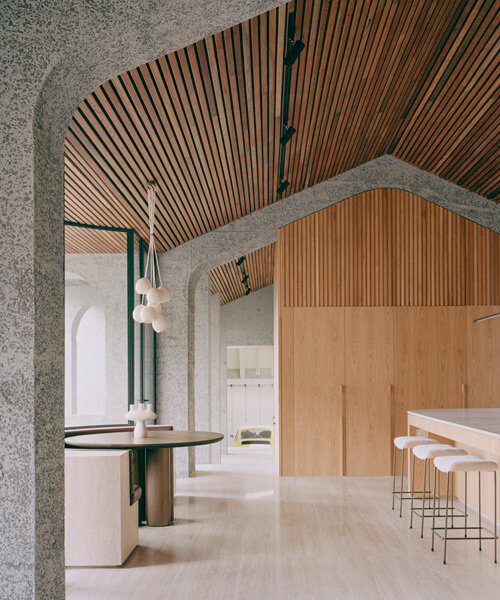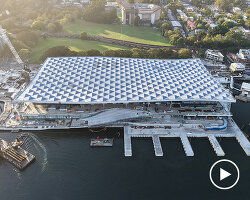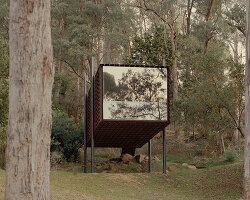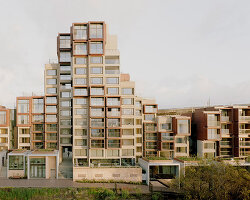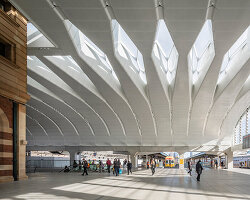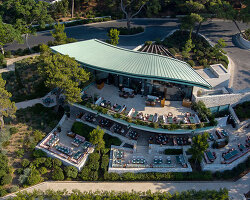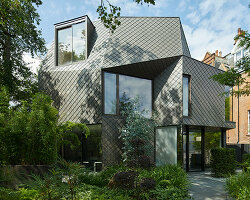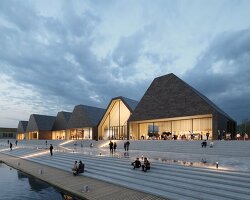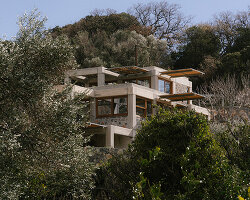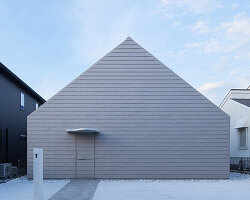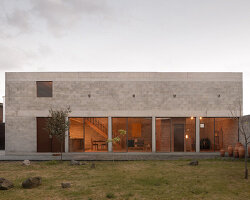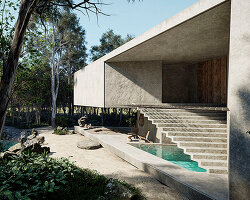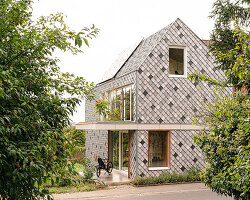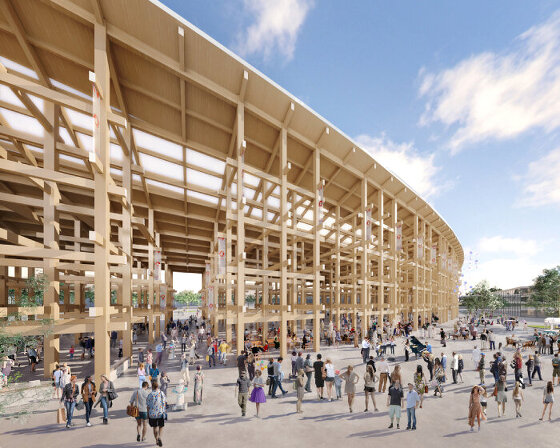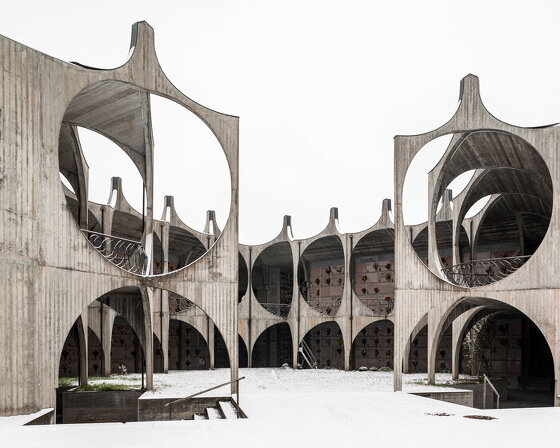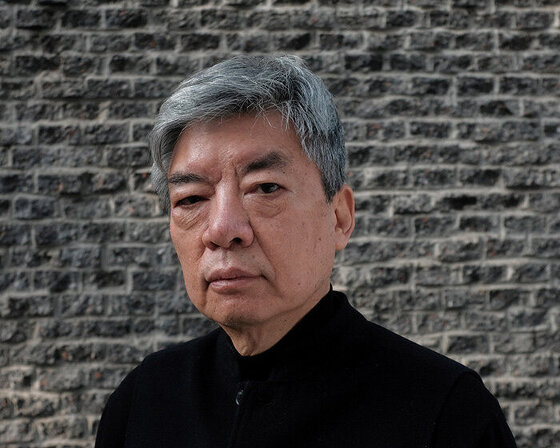architecture inspired by ancient ruins
Melbourne-based Pandolfini Architects draws inspiration from a diverse set of references, including ancient ruins and industrial structures, with the design of its Glen Iris House. This eclectic foundation informs the material palette and structural expression of the residence. The design embraces exposed, heavy materials, creating a durable and timeless design language.
The home is composed of three-dimensional geometric forms that extend across both interior and exterior spaces. Balances raw and refined materials, the project is designed to emphasize permanence and solidity. Its facade integrates a copper patina screen and a cantilevered brick-clad volume, establishing a dialogue with the Melbourne suburb’s streetscape, while a bush-hammered concrete blade wall marks the entry to hint at the material language within.
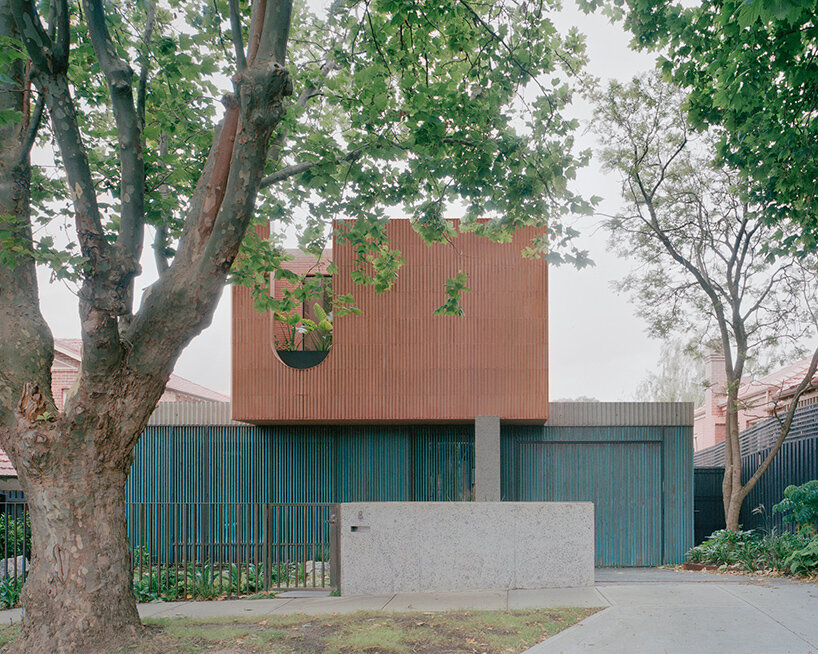
images © Rory Gardiner
three tiered pavilions form the glen iris house
Glen Iris House is structured by the team at Pandolfini Architects as an array of three tiered pavilions that respond to the long, rectangular site. A central barn-like living space is flanked by private quarters at the front and a garage at the rear. These volumes are linked by glazed passages, allowing for natural light and connectivity. A framework of bush-hammered concrete ribs defines the central pavilion, shaping both interior shared spaces and an arched promenade externally.
Internal courtyards provide privacy from the street and mitigate western sun exposure. These secluded retreats feature terracotta tiles and natural stone, reinforcing the home’s earthy material palette. The garage pavilion, designed to house the clients’ classic car collection, follows the same material logic, unifying the overall composition. Expressive design elements such as a sculpted fireplace stack and a curved staircase add dynamic sculptural qualities to the home.
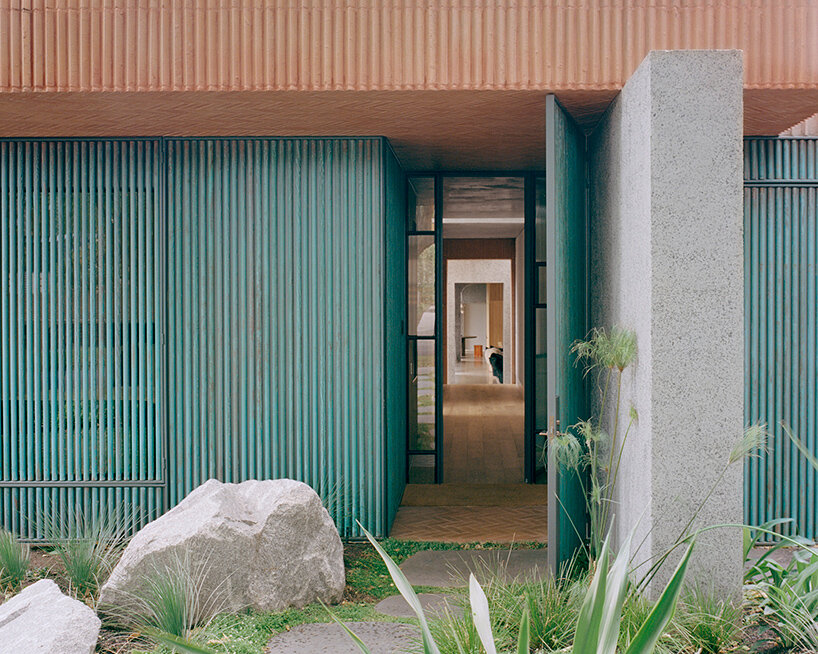
Glen Iris House by Pandolfini Architects is inspired by ancient ruins and industrial structures
a palette of copper, travertine, and terracotta
A copper patina screen stretches across the ground floor of Pandolfini Architects’ Glen Iris House, referencing the overgrown front fences of the neighborhood while maintaining a setback to enhance the streetscape. Above, the cantilevered brick volume rests on a bush-hammered concrete blade, emphasizing the entry. The terracotta brickwork, laid in varied orientations, echoes the tiled roofs of adjacent houses, creating a dynamic surface for dappled light to interact with throughout the day.
The living pavilion presents as an exposed skeleton of robust concrete ribs, providing a protective shell for the refined interior. Bush-hammered concrete walls define structural zones, while interior materials such as travertine, American oak, and polished plaster contrast with the rough textures. These elements create a harmonious balance between raw materiality and crafted detailing.
The living pavilion is oriented towards the northern aspect, with deep-set glazing that moderates light exposure and frames views of the central garden and pool. Operable windows facilitate cross-ventilation, enhancing passive climate control. Durable, low-maintenance materials ensure the home weathers naturally over time. Integrated planter boxes and carefully curated openings establish a seamless connection between architecture and landscape.
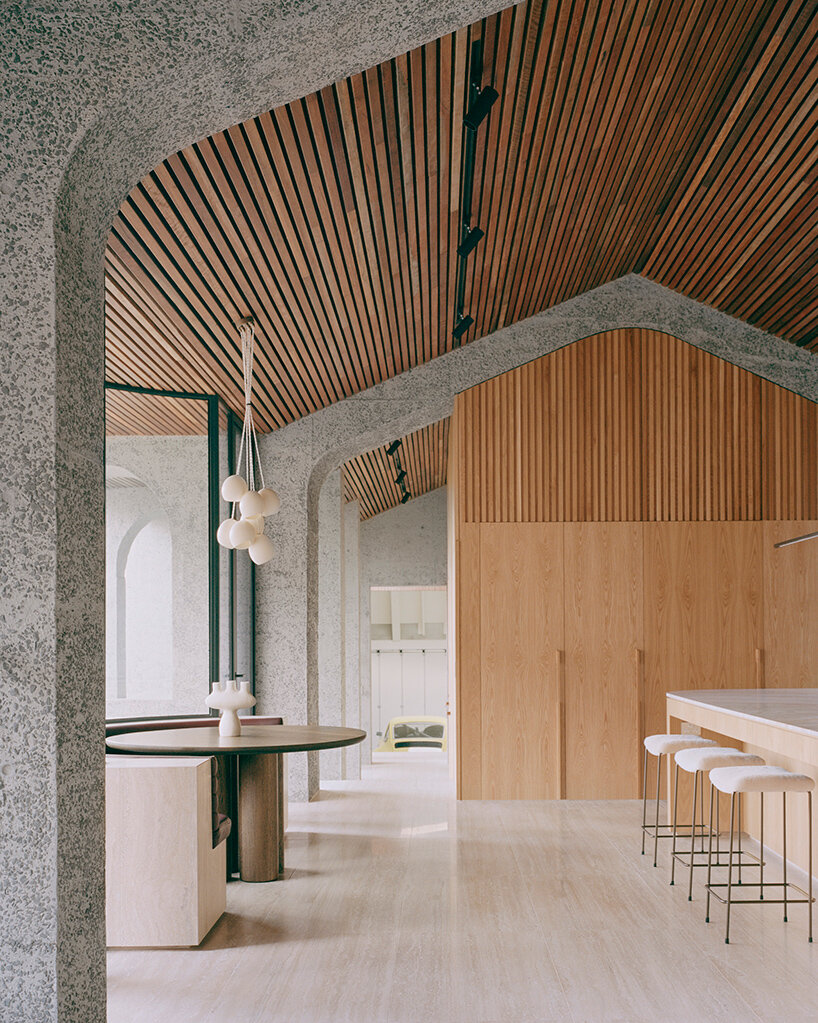
the house features a geometric composition of raw and refined materials
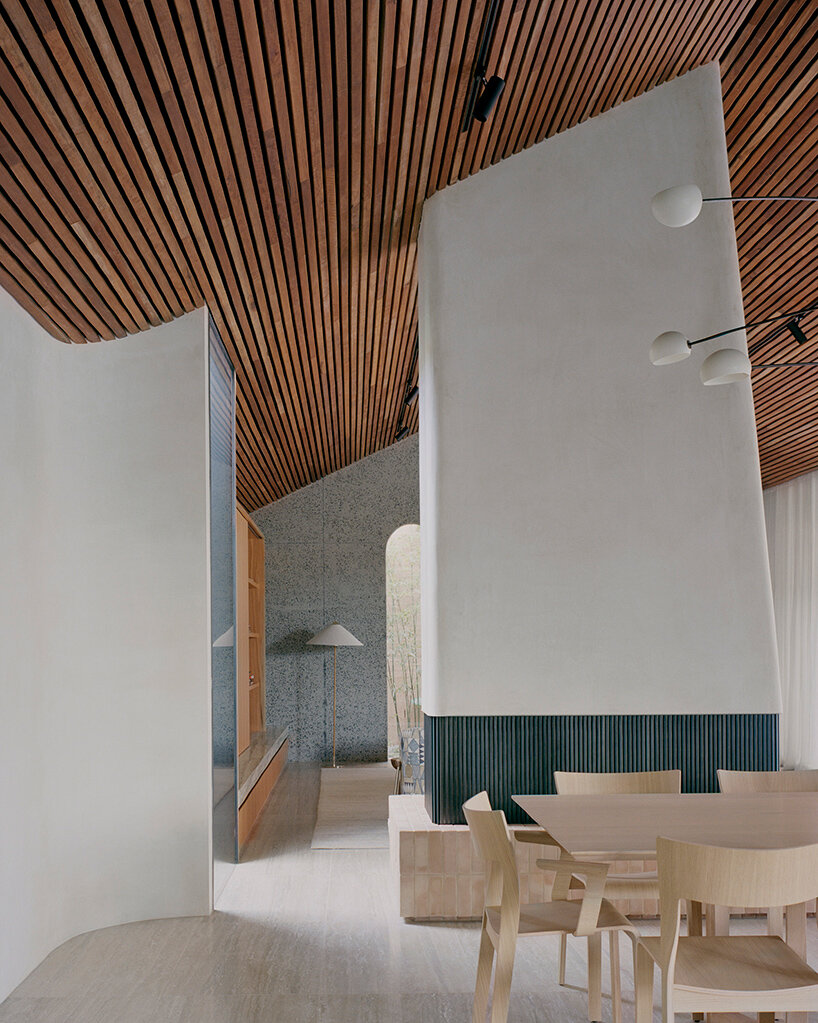
three tiered pavilions follow the site’s contours with a central living space flanked by private quarters
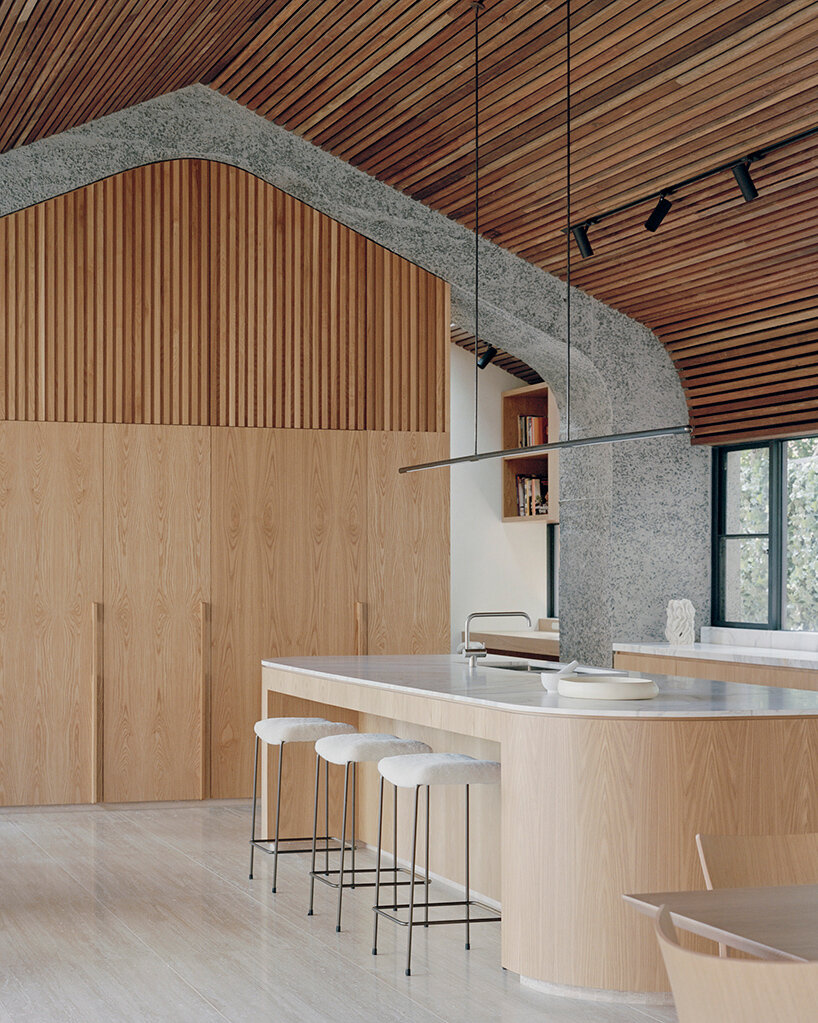
travertine American oak and polished plaster contrast with rough textures
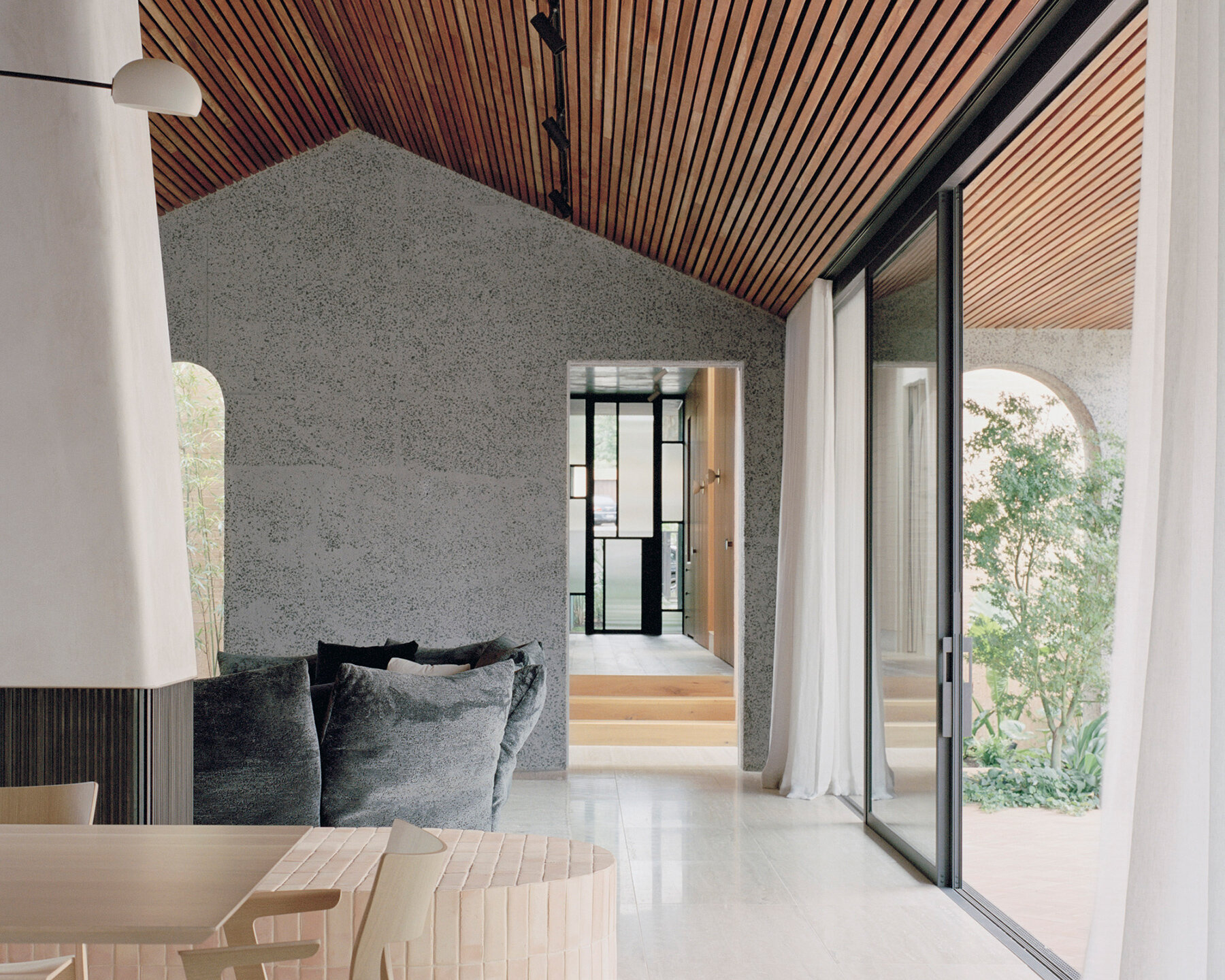
deep-set glazing in the living pavilion controls light exposure and frames garden views
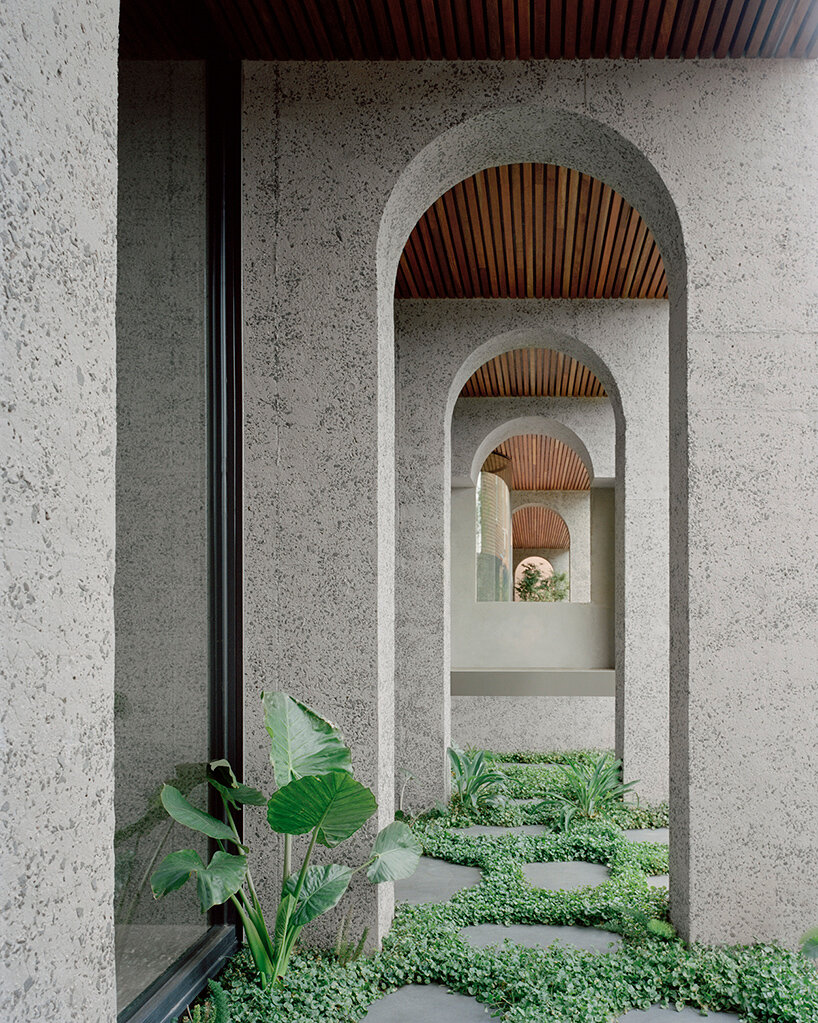
a wall of bush-hammered concrete blades defines the entry
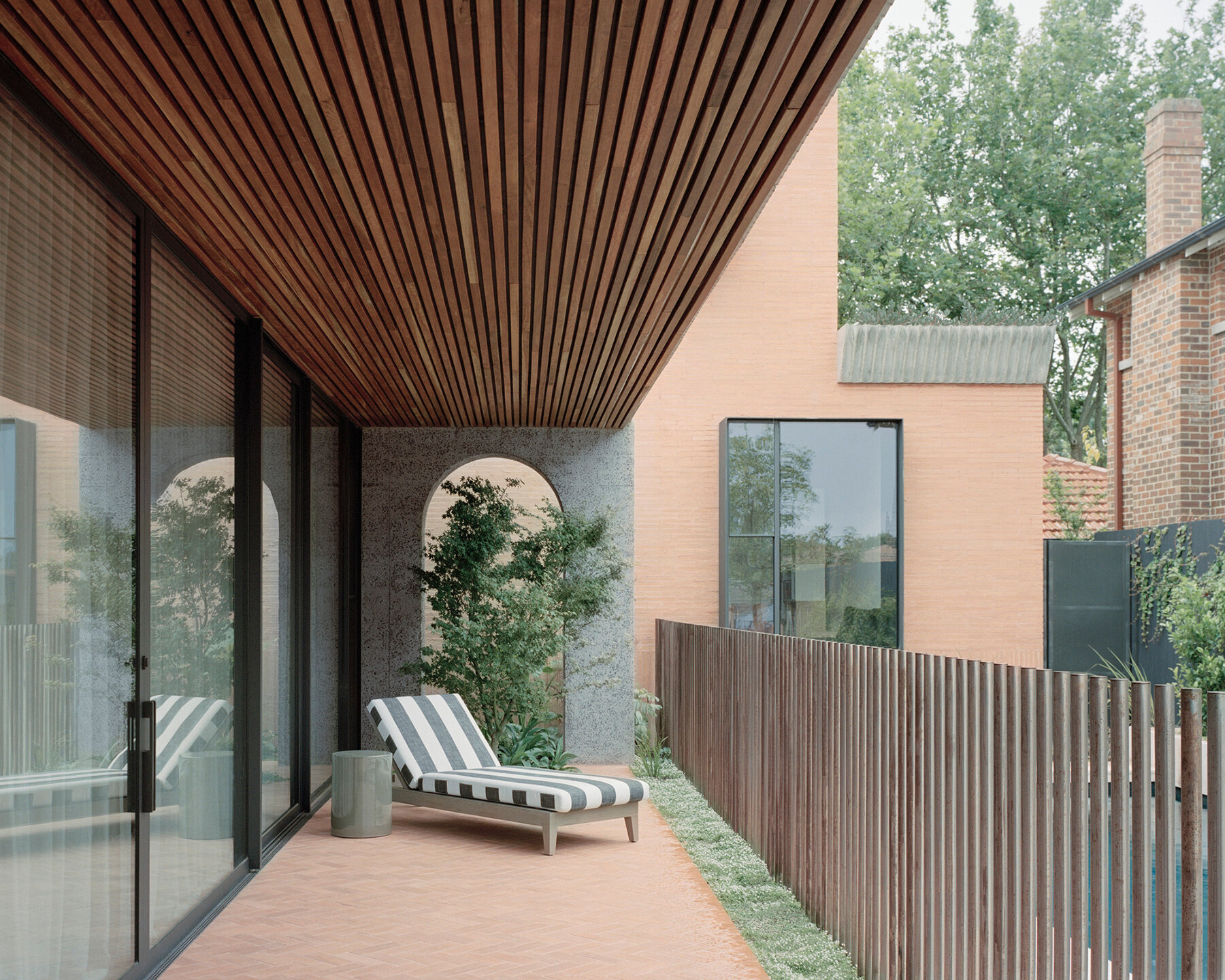
a copper patina screen and a cantilevered brick-clad volume form the facade
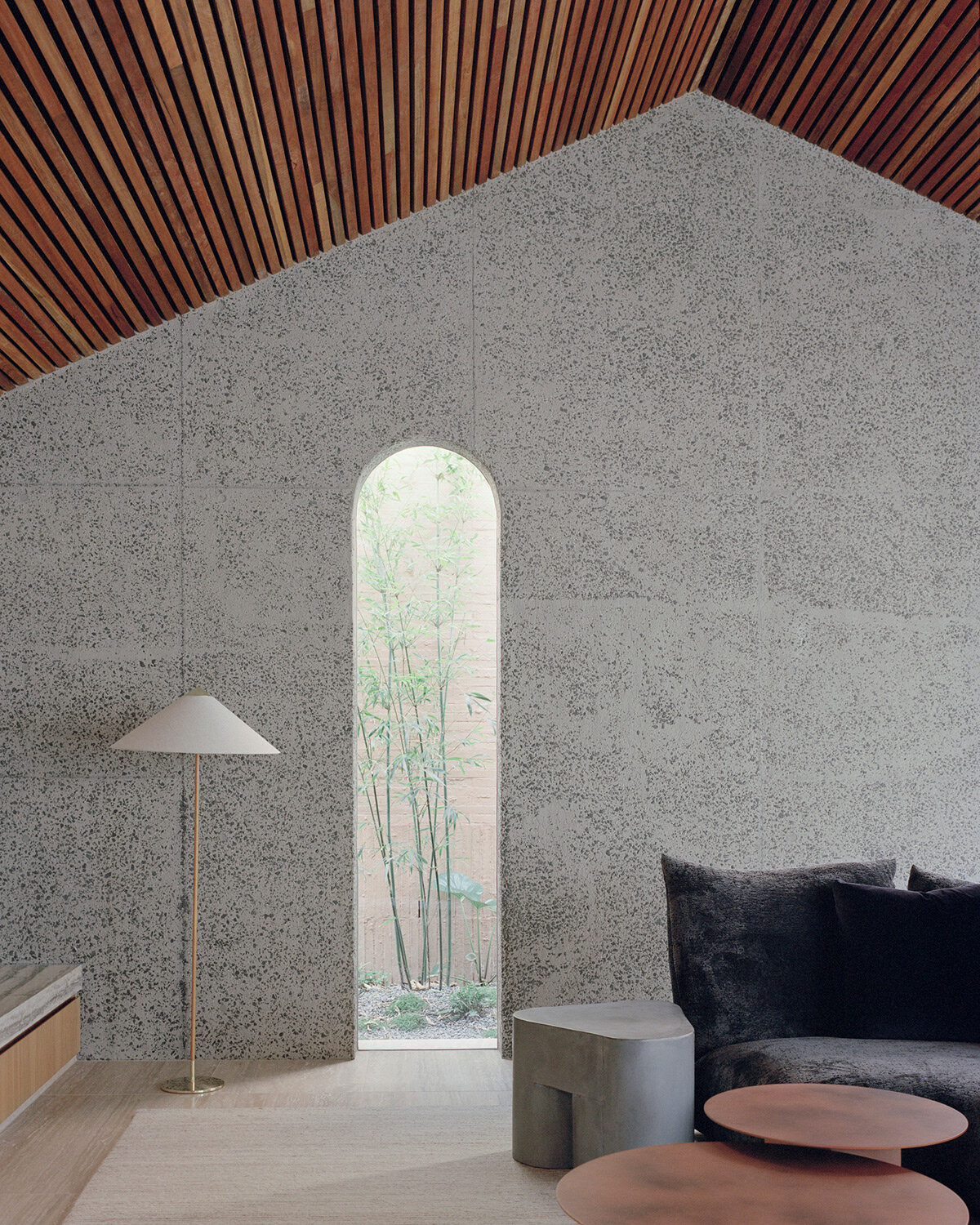
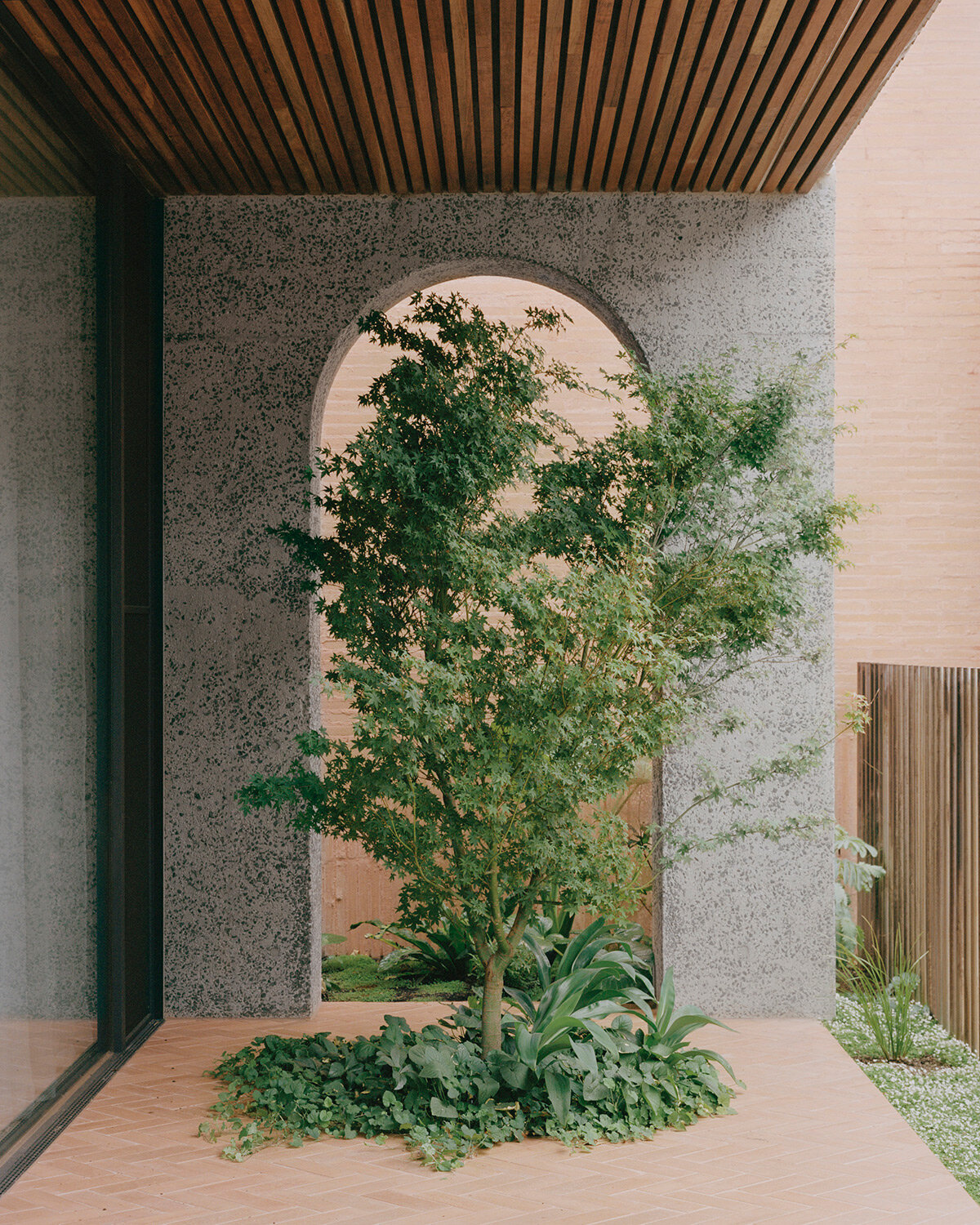
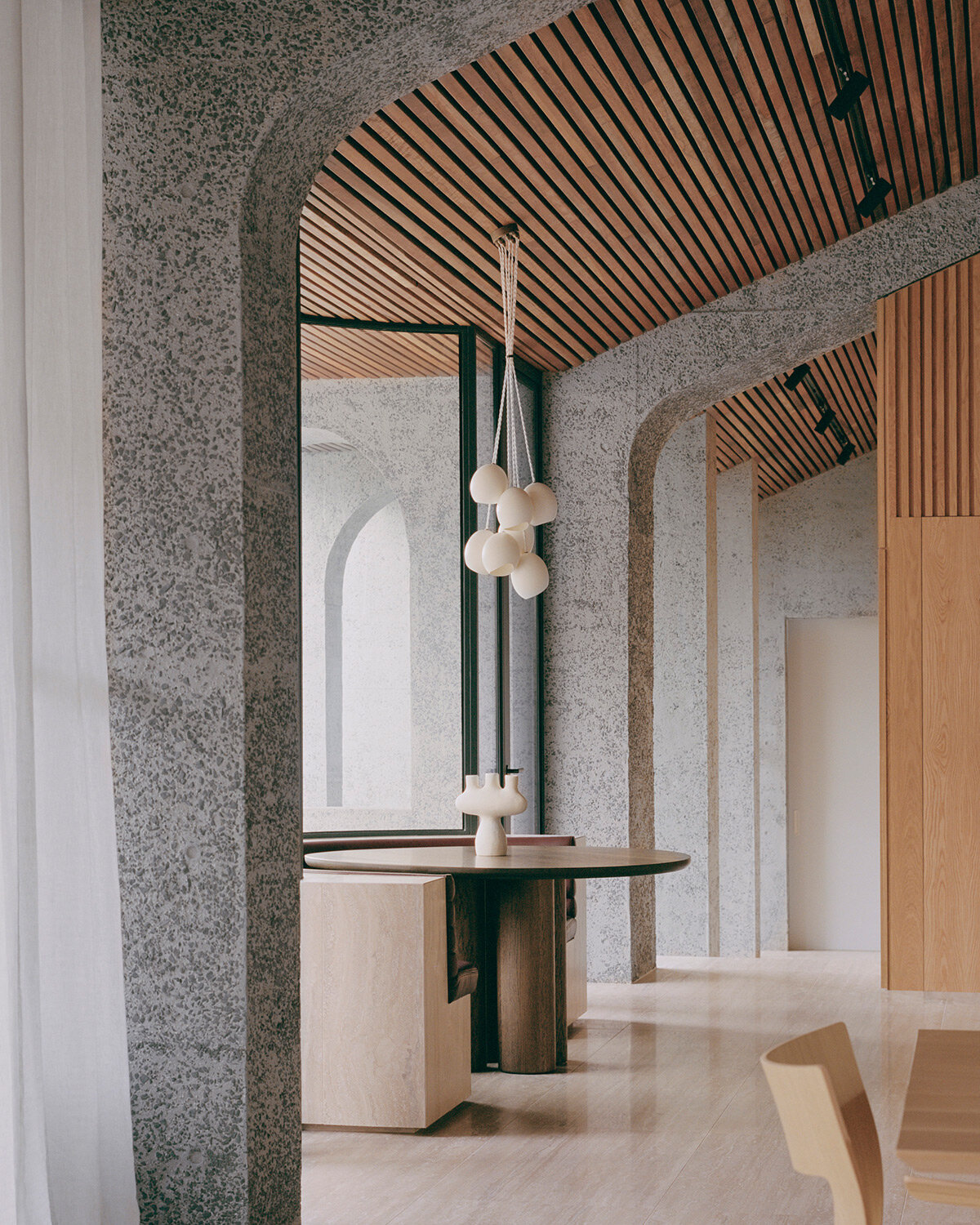
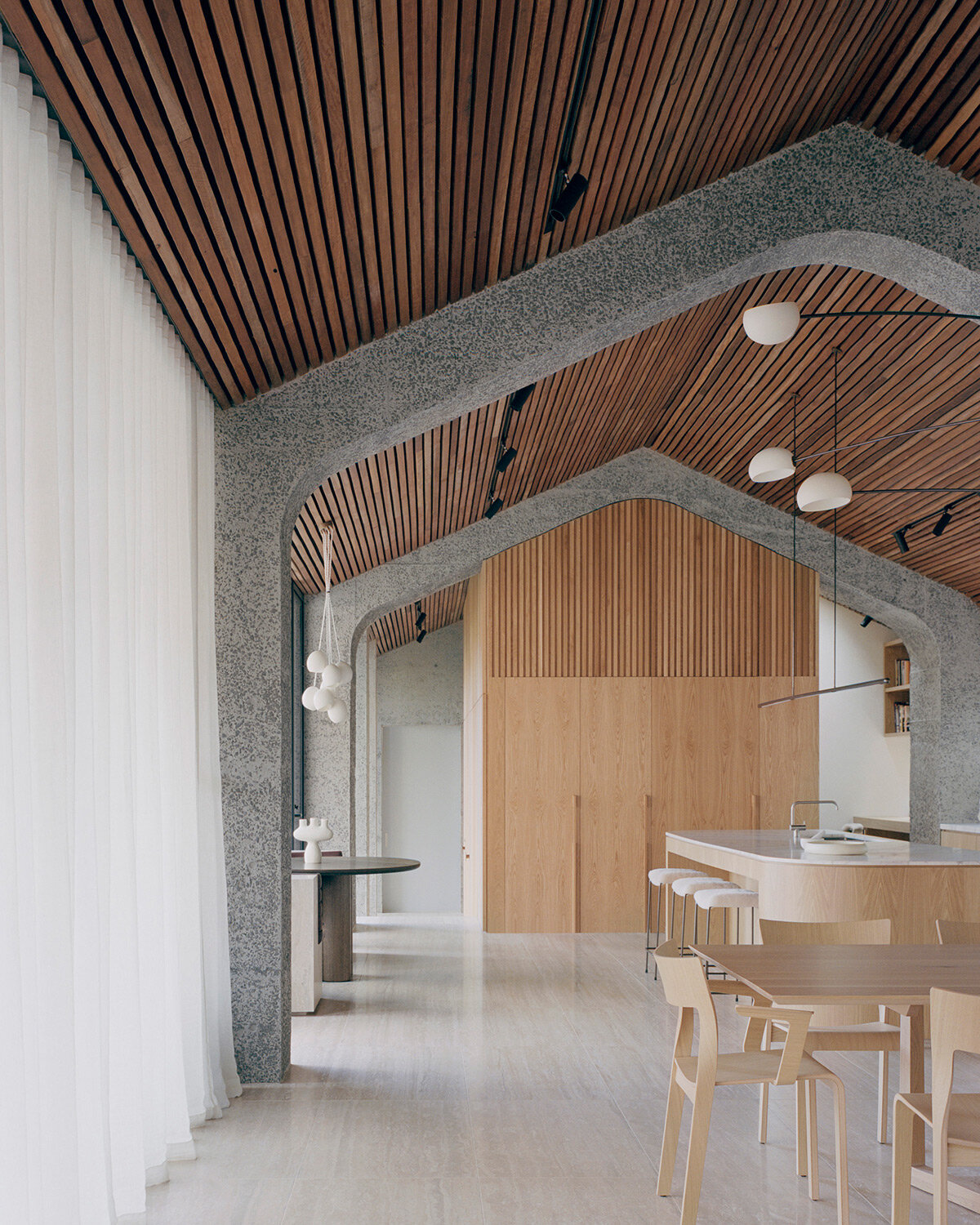
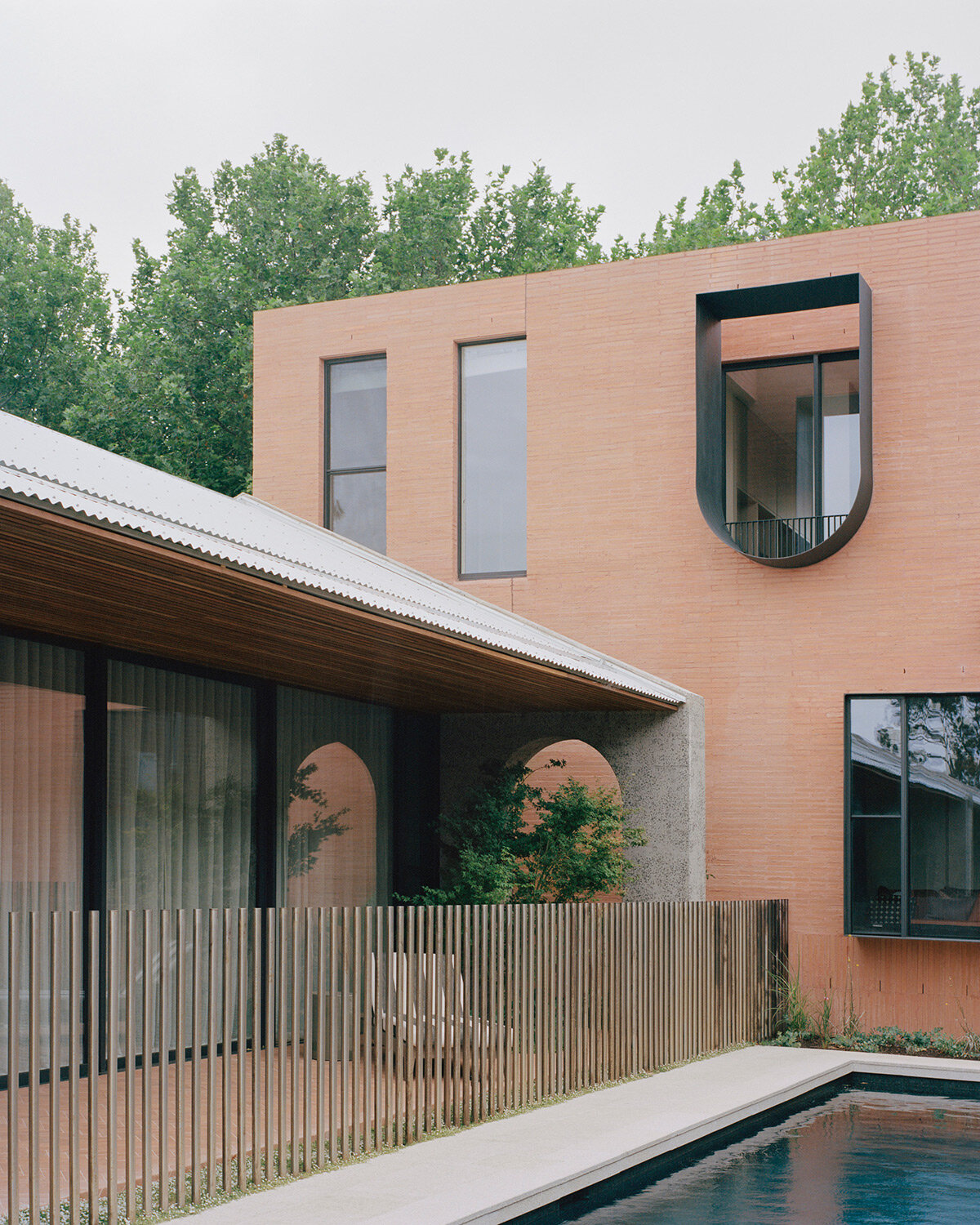
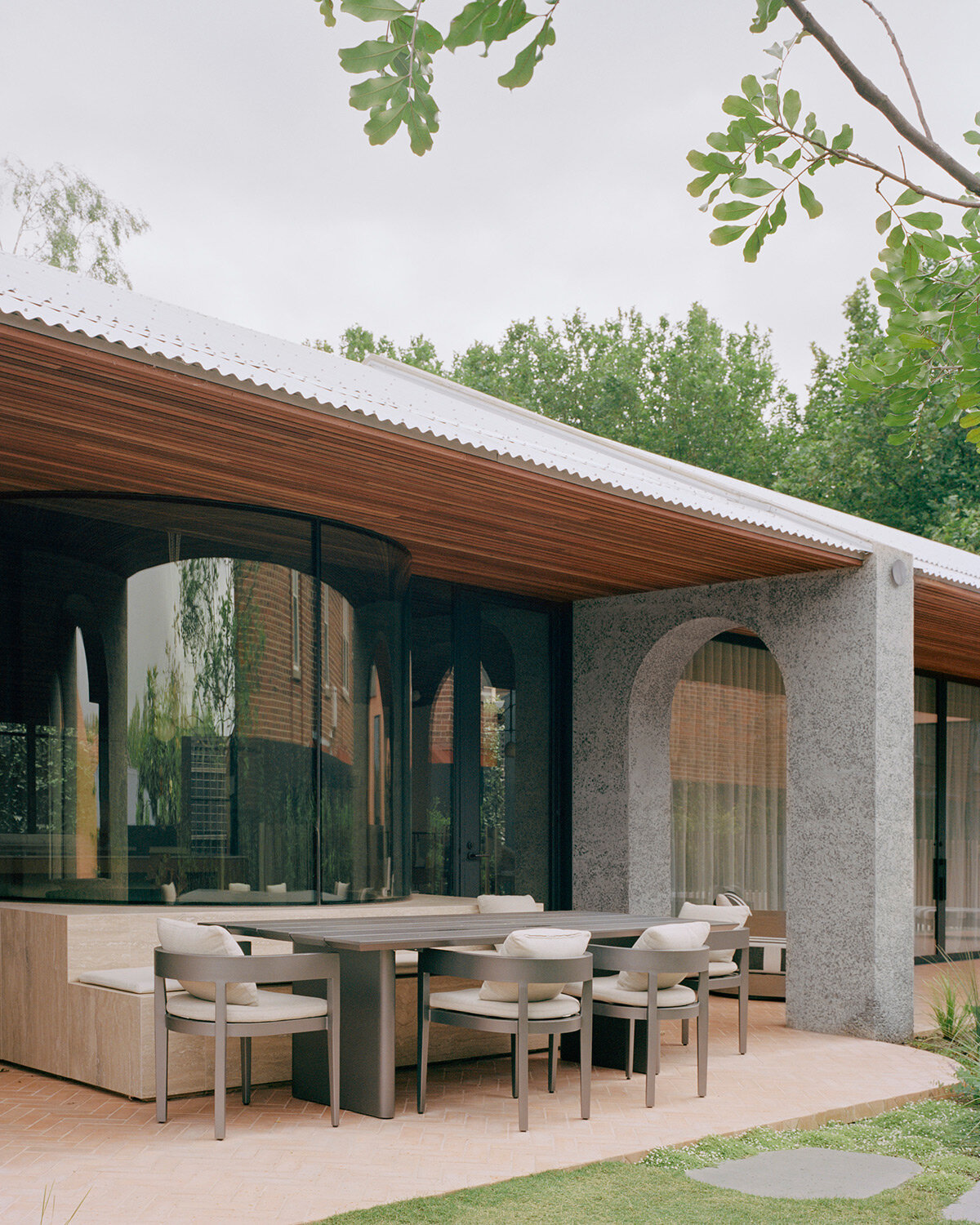
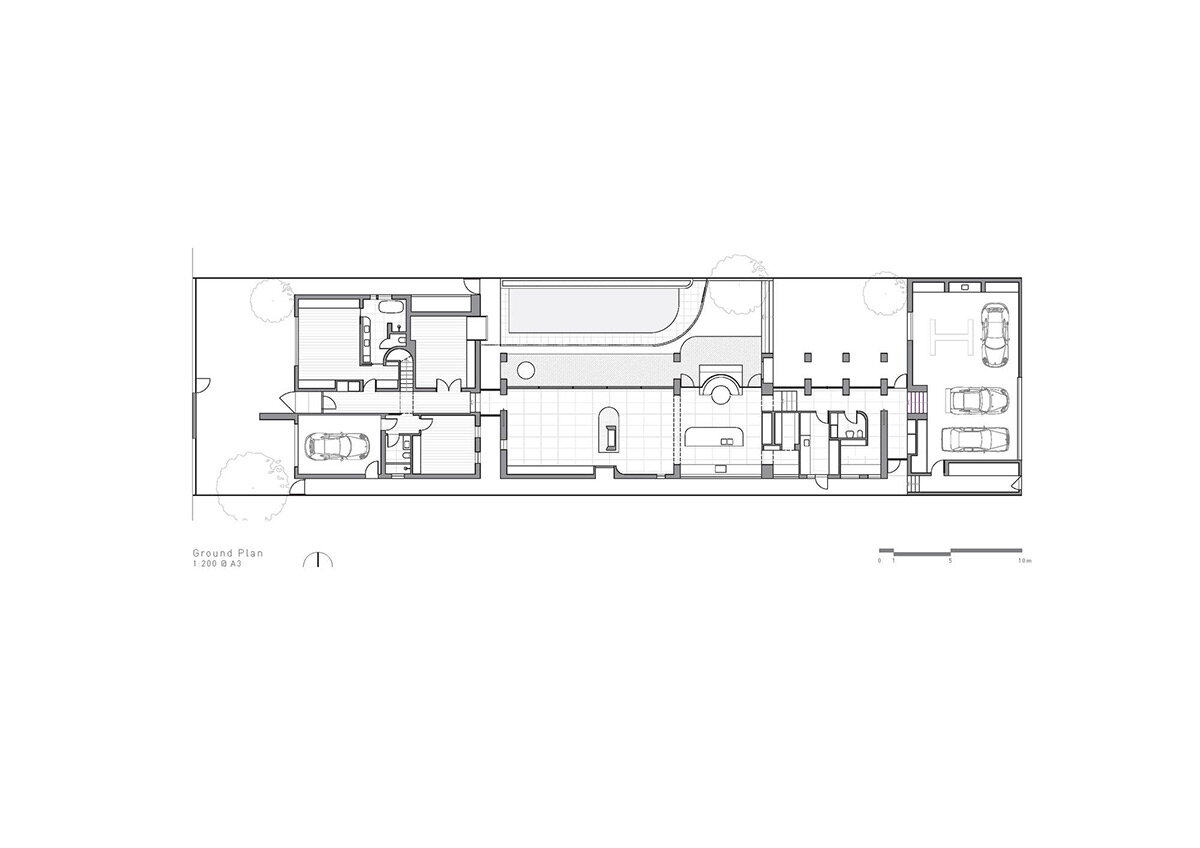
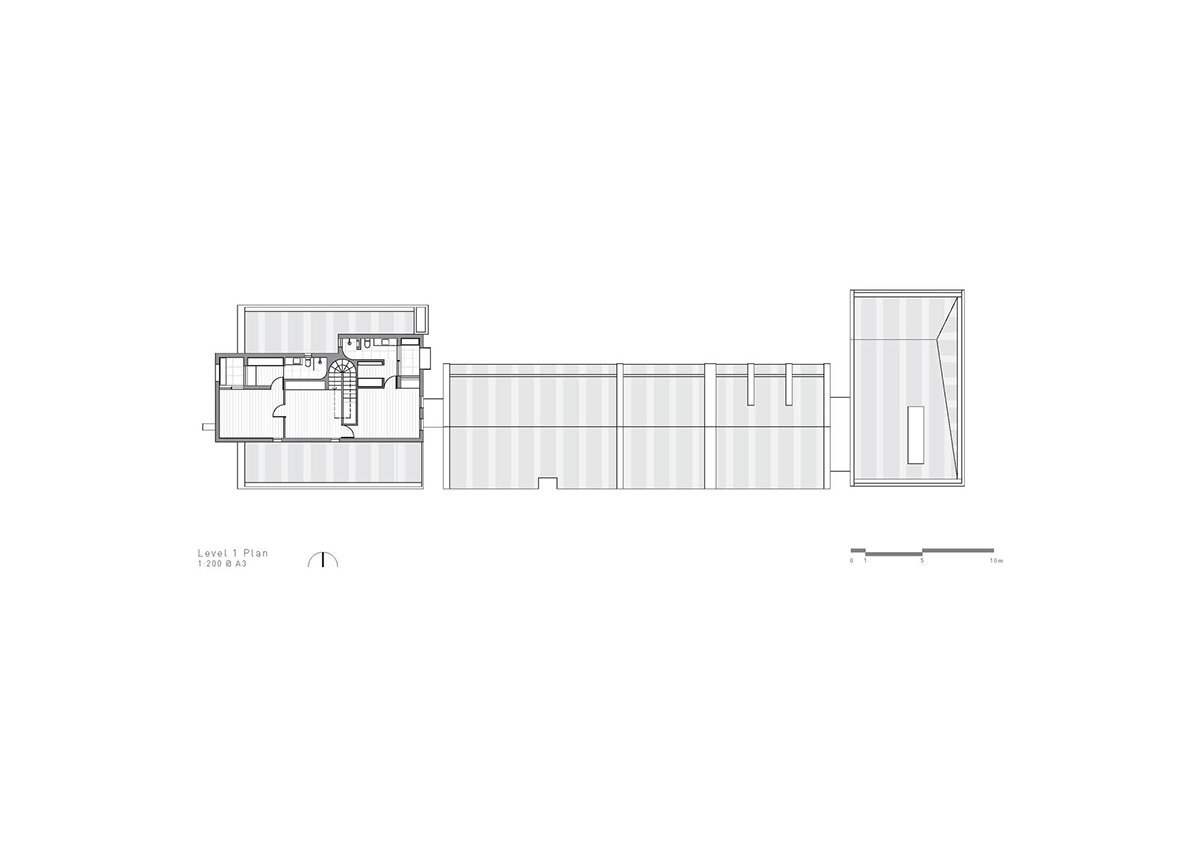
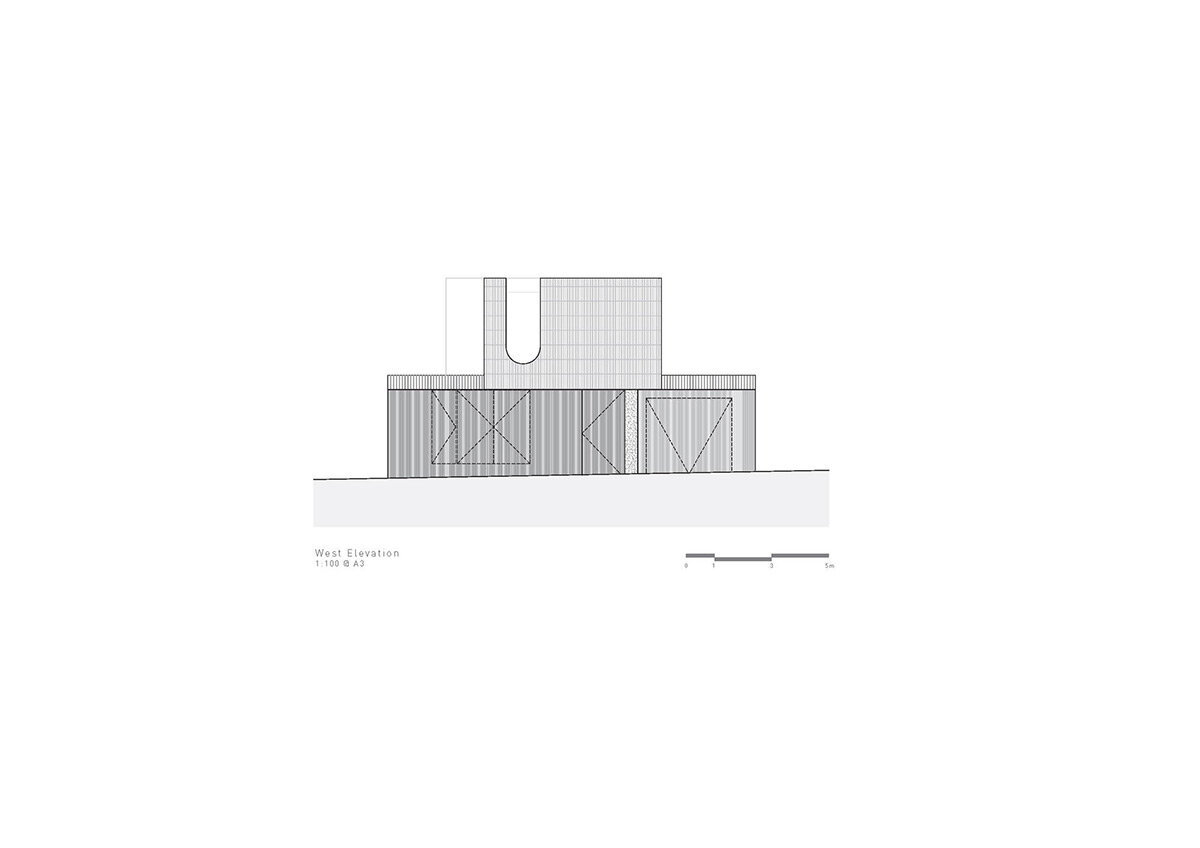
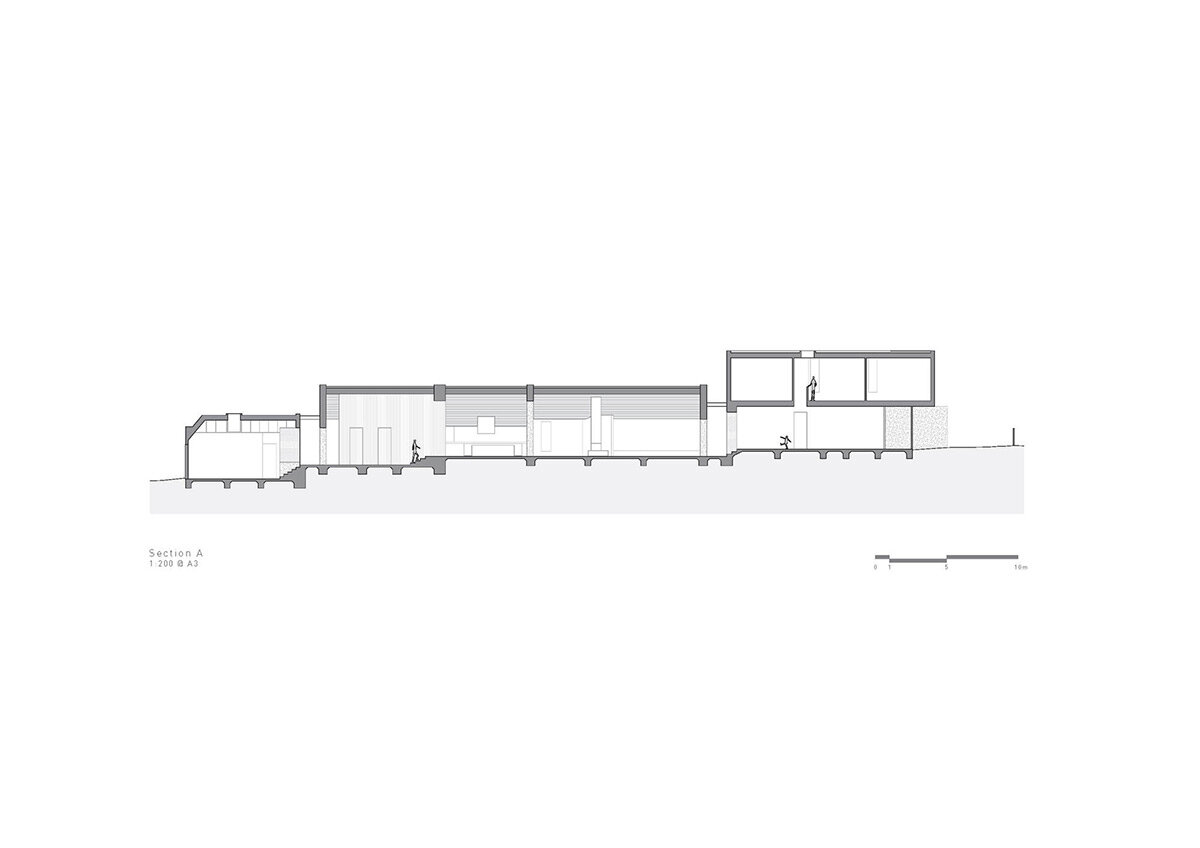
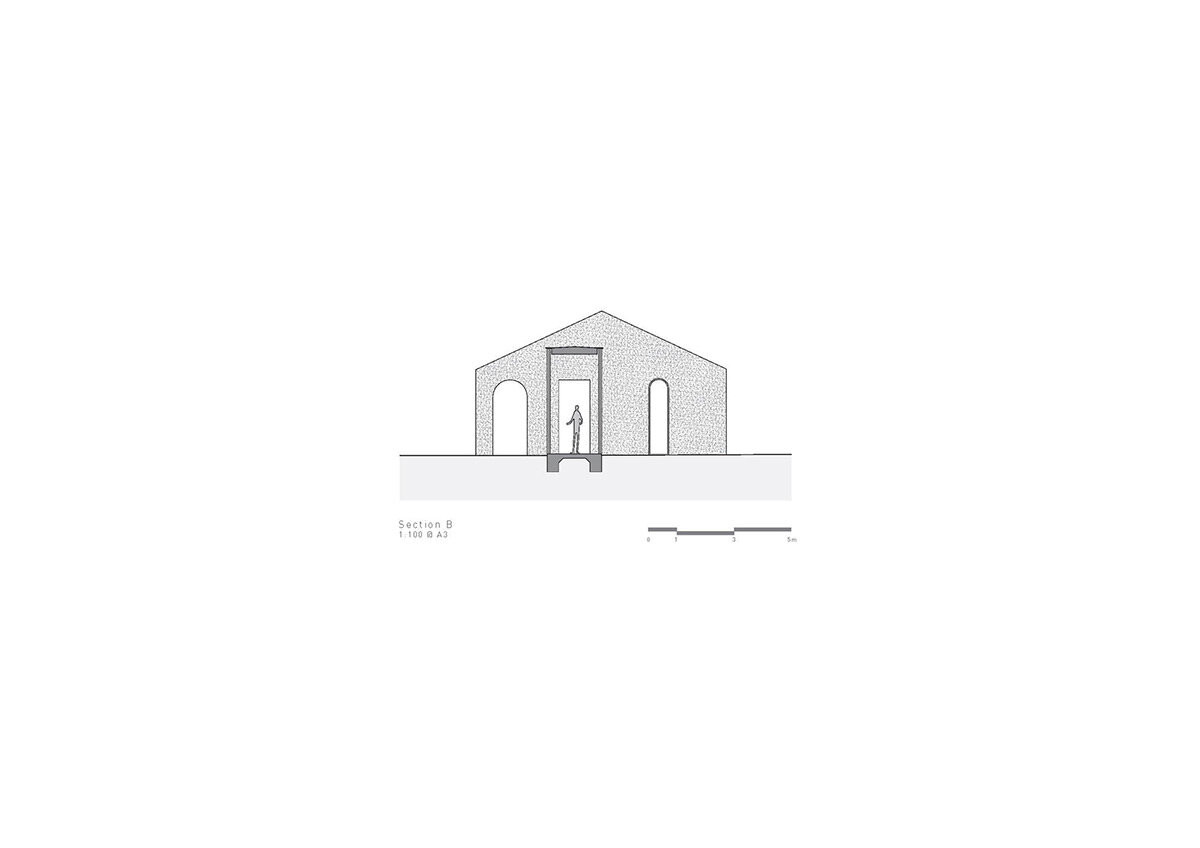
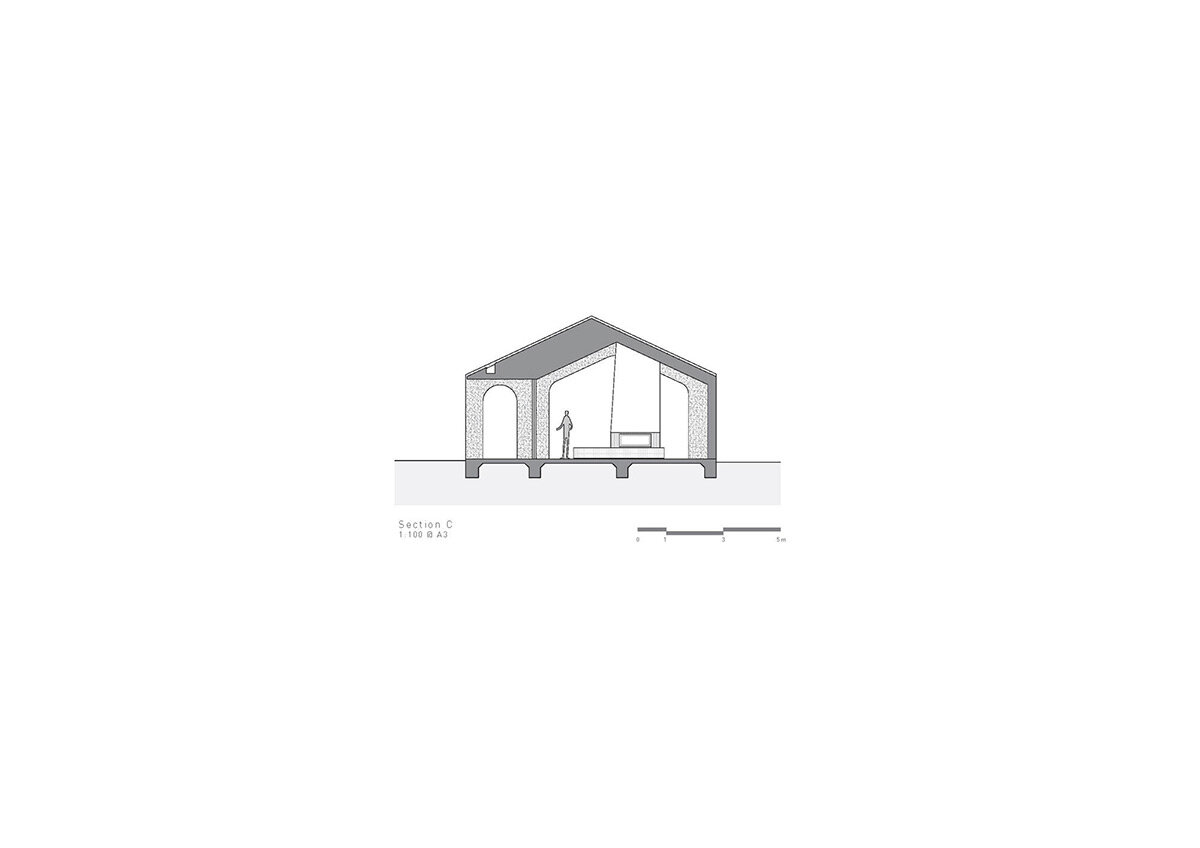
project info:
name: Glen Iris House
architect: Pandolfini Architects | @pandolfini_architects
location: Victoria, Australia
completion: 2023
photography: © Rory Gardiner | @arorygardiner
interior design, styling: Pandolfini Architects, Lisa Buxton Interiors | @lisabuxtoninteriors
landscape architecture: Mud Office | @mudoffice
engineering: Meyer Consulting
builder: DOME
